Should You Try Prebiotic Soda for Gut Health in 2025?

Posted On: August 2025
Prebiotic Soda: Everything You Need to Know About 2025’s Fizzy Gut Health Craze
Walk into any supermarket these days—or scroll through TikTok at 2 AM—and chances are you’ve spotted them. Rows of pastel-coloured cans with fun names, quirky fonts, and the words “prebiotic soda” front and center. They’re in grocery carts, gym bags, café menus, and maybe even in your best friend’s fridge.
It’s safe to say: 2025 belongs to the gut-healthy soda revolution.
But before you crack open a can (or roll your eyes at yet another wellness “must-have”), let’s slow down for a second. What exactly is prebiotic soda, why is it blowing up, and should you actually be drinking it—or is this just another health fad destined to fade like activated charcoal lattes and celery juice cleanses?
Let’s break it all down—no jargon, no complicated science lecture, just the real story behind this fizzy phenomenon.
What Exactly Is Prebiotic Soda?
If you see for the first time you will see the prebiotic soda the same as the normal soda with fizzy bubbles, refreshing sweetness and bright design. But the main difference isn’t in how it looks or tastes, it’s about what’s happening behind the scenes in your gut while drinking. These sodas contain the prebiotics whereas other are jam-packed with sugar and artificial stuffs.
Think of it this way:
- Probiotics are actual living bacteria—the “good guys” we often associate with yogurt, kombucha, or kimchi.
- Prebiotics are the dietary fibres which is the food that help the good bacteria to survive and multiply.
Imagine your gut to be a garden. Probiotics are the flowers and herbs you plant. Prebiotics are the water and fertilizer that help them grow strong and beautiful—while keeping weeds in check.
So, when you sip on prebiotic soda, you’re essentially feeding your microbiome in a way that feels indulgent and fun, unlike swallowing a bland fibre supplement.
Popular ingredients behind these fibres usually come from things like chicory root, inulin, Jerusalem artichokes, or cassava fibre. They’re blended into a sweet, sparkling drink that makes you feel like you’re “treating yourself” while technically doing your gut a favour.
And honestly—that’s the genius of it.
Why Is Prebiotic Soda Everywhere in 2025?
Here’s the simple answer: gut health is having its moment.
A decade ago, no one was seriously talking about the microbiome outside of medical circles. Fast forward, and now we know that your gut is about way more than digestion—it’s linked to everything from your immune system and skin health to your mood, energy, and even mental clarity.
Science is making it increasingly clear: when your gut bacteria are happy, you are happy. Or at least, healthier and more resilient.
At the same time, there’s been a massive cultural shift in how we think about beverages. Regular sodas? Everyone knows they’re sugar bombs. Energy drinks? Still popular, but people are side-eyeing the jittery crash. Even diet sodas, once promoted as the “healthy” option, are being questioned for potential long-term effects of artificial sweeteners.
Yet… people still want bubbles. There’s just something about carbonation—it scratches an itch, whether you’re unwinding at lunch, winding down after work, or just craving something fun to sip on. Sparkling waters grew popular a few years back, but for some, they lack flavour. Enter: prebiotic soda—a drink that feels like soda, tastes like soda, but comes with a wellness “halo.”
Its indulgence rebranded for the health-conscious generation.
The Confirmed Health Benefits of Prebiotic Sodas
Okay, catchy labels and wellness buzzwords aside: what does drinking this stuff actually do for you?
Here’s what science suggests—if you drink prebiotic sodas consistently (not just a single can once in a blue moon):
1. A Happier Gut, A Better Balance
Your digestive system houses trillions of microbes. Some are awesome partners; some are just… freeloaders. Prebiotics help the superheroes in your gut thrive, which in turn suppresses the “villains.” A better balance can strengthen your gut lining, reduce inflammation, and help your intestines work smoothly.
2. Digestive Relief
Let’s be real: constipation, bloating, or just “meh” digestion affects most people at some point. Prebiotic fibres act almost like a broom—adding bulk and encouraging smoother movement through the digestive tract. While it’s not a magic laxative, it does steadily support things moving along.
3. Mood and Mental Health Boost?
Here’s the wild part: your gut and brain are in constant conversation via the gut-brain axis. Scientists now believe that a well-fed microbiome positively impacts levels of serotonin (a.k.a. the “happy hormone”). Translation: your can of soda might be nudging your mood in a positive direction over time.
4. Satiety and Weight Management
Unlike sugar, which can spike your blood glucose and leaves you hungry for more, prebiotic fibres digest more slowly. This can help you feel more full for a longer time, which may be help you reduce your cravings or mid-afternoon snackies.
So no, it’s not a miracle in a can. But compared to traditional sodas? It’s a step up.
The Downsides You Should Know
Before you fill the colas in your fridge let us check the realism below:
- Sugar Still Counts: Not all prebiotic sodas are innocent. Some brands sneak in cane sugar, fruit concentrates, or sweetener blends. One can might seem innocent, but drink 3–4 daily, and that sugar adds up. Always read the label.
- Bloating Is Common at First: If you suddenly amp up your fibre intake, your gut bacteria will go wild—literally feasting.
- Sign: It has extra gas, and it is puffy. Not harmful, just uncomfortable. Pro tip: start slow (like one can a day) and ease in.
- It’s not just a fibre replacement: just chugging sodas does not mean you can just skip on ACTUAL fibrous sources like fruits and vegetables and more. Those can provide a larger spectrum of fibres and nutrients that soda alone can’t provide. You can use prebiotic sodas as a bonus, not as the main.
Kombucha vs. Prebiotic Soda vs. Regular Soda
You’re standing in the beverage aisle. The neon kombucha bottles and sparkling rows of Coke are the sleek little prebiotic sodas. How do pile up?
Regular Soda: It is full of fun and nostalgic however we all know its also tons of sugar and 150+ calories in a single can and adds zero nutritional upside.
Kombucha: The fermented tea is full of live probiotics. Often tangy, vinegary, sometimes a little funky. A good option if you can handle the fermented bite and want actual bacteria for your gut.
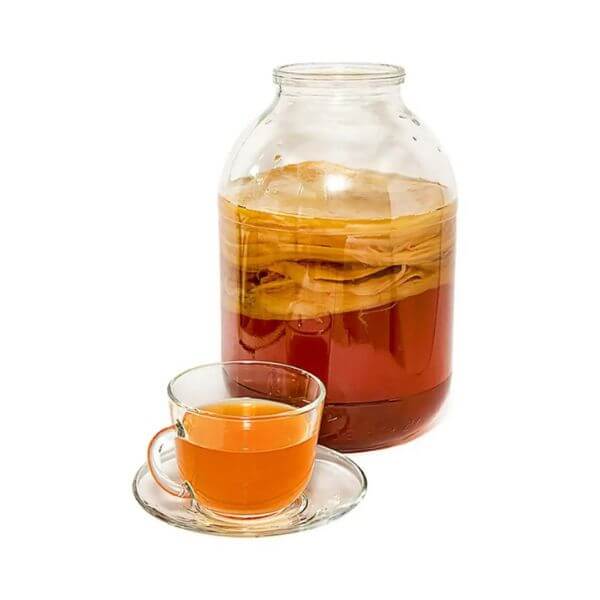
Prebiotic Soda: Lighter, sweeter, and more soda-like—usually 35–50 calories, about 5–9 grams of sugar, and a healthy dose of fibres.
So, if kombucha is the “earthy, tangy wellness drink” and soda is the “sugary guilty pleasure,” prebiotic soda is really the middle ground. It’s bridging the fun of soda with the function of kombucha.
The Big Names in 2025
The prebiotic soda is flourishing, and each brand has carved out from its niche.
Here are the frontrunners:
- Poppi – The “gateway soda.” Sweet, fruity, and with a slight tang of apple cider vinegar.
- Olipop – Nostalgia in a can. Root beer, cola, cream soda, and vintage flavours—crafted as healthier soda replicas.
- Culture Pop – Fun, unusual flavour combos like ginger-lemon or watermelon-lime.
- Mayawell – Latin-inspired fruity blends that highlight chicory root fibre.
- Wildwonder – It’s a combination of probiotics and prebiotics and adds a superfood.
Pro tip: if you’re new, grab a few different brands and experiment. Everyone’s taste buds—and gut—respond differently.
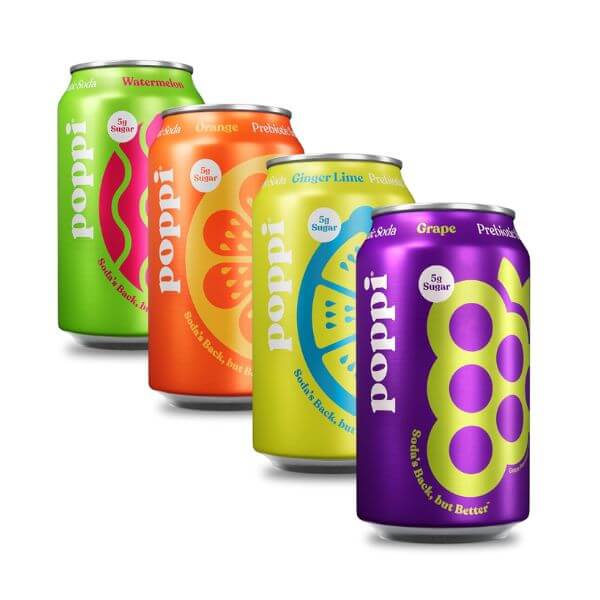
Can You Make Your Own Prebiotic Soda at Home?
Absolutely. And here’s the cool part: it’s cheaper, customizable, and you control the sugar.
What you need?
- Sparkling water (your bubbly base).
- The chicory root powder and psyllium husk with inulin which is a prebiotic fibre.
- Natural flavourings—fresh juices, herbs, ginger, citrus, or blended berries.
Some DIY inspirations:
Lemon-Ginger- Sparkler: A drizzle of honey and root fibre with chicory root fibre, sparkling water and lemon juice.
- Berry Fizz: Fresh blueberry-raspberry blend mixed with sparkling water and inulin for fibre.
- Mint Cooler: Sparkling water, lime juice, fresh mint, and a spoon of fibre powder.
Who Should (and Maybe Shouldn’t) Drink Prebiotic Soda?
For most healthy adults, sipping prebiotic soda is totally safe and even beneficial in moderation. It’s especially great for:
- People who don’t get enough fibre daily
- Loyal soda drinkers trying to cut sugar
- Anyone dealing with occasional digestive sluggishness
But—there are exceptions:
- People with sensitive guts or IBS: Sometimes added fibre can worsen symptoms.
- Diabetics: Keep an eye on your sugar content.
- Kids & pregnant women: It is somewhat, okay in minor amounts, but consuming daily isn’t recommended due to all the added sweeteners or the caffeine.
Final Thoughts: Is It Worth the Hype?
Here’s the bottom line: prebiotic soda isn’t a miracle elixir. But it’s also not a gimmick. It’s a genuinely smarter alternative to sugar-loaded soda—lower in calories, somewhat functional, and way more interesting than plain water if you’re craving fizz.
The catch? It’s a sidekick, not the superhero. You still need veggies, fruits, whole grains, and varied fibres. No soda—prebiotic or otherwise—can replace those essentials.
But as a fun, feel-good swap? It makes sense. Especially if you miss the joy of soda but don’t love what it does to your body. So—should you try it? Absolutely. See how your gut feels, pay attention to your sugar intake, and maybe discover your new favorite can of fizz this year.
Men’s Hair Health Tips: How Can You Save Your Hairline?

Posted On: August 2025
Men’s Hair Health Tips: Save Your Hairline Naturally with Diet, Care & Smart Habits
Your hairline is like that loyal old friend—always there for you until one day you realize it’s… retreating. If you’ve recently spotted more forehead than you remember, don’t panic. In this guide, you’ll find practical men’s hair health tips mixed with a bit of humour, because stressing about hair loss is ironically bad for your hair.
The Day My Hairline Sent an SOS
It usually starts subtly. You’re brushing your hair in the morning, and suddenly the comb seems to be carrying more cargo than usual. Or maybe you catch yourself in the mirror under harsh bathroom lighting and think, “Wait, was my forehead always this big?” That’s your hairline waving a little white flag and whispering for help.
Hair thinning in men can begin as early as your twenties, but most people ignore the early signs until it’s noticeable. The first step in saving your hairline is simply paying attention. Check for the changes such as hair texture and density. Catching it early gives you a much better chance to manage it effectively.
The good news is that early hairline retreat doesn’t mean you’re doomed. With the right men’s hair health tips, a few lifestyle tweaks, and possibly some targeted treatments, you can slow the process down. In fact, this moment—when you first notice the SOS—could be the turning point where you take back control.
The Follicle’s Food Menu
You already know that abs are built in kitchen as said. Well, so is healthy hair. Your follicles are living little factories, and they need the right fuel to work their magic. Think of your scalp like soil—it produces stronger growth when nourished from within.
Protein should be at the top of your follicle menu. Hair is mostly made of keratin, a protein, so including eggs, fish, chicken, or plant-based sources like lentils helps strengthen strands from the root. Vitamin D and other minerals such as iron, zinc play very important role in shedding activity.
If you want a scalp that secretly thanks you every morning, get creative. Salmon can provide you with omega-3 which can greatly improve your hair density. Pumpkin seeds are also rich in zinc as well as spinach which can boost iron levels. Even dark chocolate contains copper, which promotes melanin production to keep your hair’s natural colour intact. A balanced diet is more than just a men’s hair health tip—it’s your hair’s long-term insurance plan.

Scalp Gym: Workouts You Didn’t Know You Needed
Your scalp might not be lifting dumbbells anytime soon, but it does need exercise. Improved blood flow means your follicles get more oxygen and nutrients, which can encourage thicker growth. This is where scalp massages come in—they’re like personal training sessions for your hair roots.
Start with gentle circular motions using your fingertips (not nails) for about five minutes a day. You can do this while shampooing or sitting at your desk during a work break. It’s relaxing, improves circulation, and may even help reduce stress—a sneaky cause of hair loss.
For an upgraded “scalp gym” session, consider using a soft-bristle scalp brush or an electric massager. Some people swear by inversion techniques, where you bend forward for a few minutes to encourage blood flow to the head. While it’s not a miracle cure, these daily habits fit perfectly into the bigger picture of men’s hair health tips.
Weather vs. Hair: The Unspoken Battle
Your hair’s biggest enemy might not be genetics—it could be the weather. Your hair tube starts swelling and makes it more breakable in humidity and during winter the air strips the moisture and breaks. Sun UV rays also harm the hair shell and the color fades. If you live somewhere where there are sudden extreme seasonal shifts, protecting your hair should be a vital part of your routine. A hat can help from surviving through UV rays.
While in winter, you can switch over to some hydrating shampoos and oils which can help fight dry-ness. Pollution can also be another hazard. Small dust and smoke particles can clog up your sacs which can make your hair dull.
Regularly washing your hair with a gentle, sulphate-free shampoo can help you clear your scalp clear. Weather might seem like something you can’t control, but the right defensive moves will help you win this silent battle for your hair’s health.
Tech Stress on Your Tresses
You didn’t expect your phone to be a hair health hazard, did you? But here’s the thing—too much screen time can lead to poor posture, which affects circulation to your scalp. Late-night scrolling which leads to you getting less sleep can also cause problems. Your body repairs and regenerates while you are asleep and hair follicles are regenerate during this time. Blue light exposure can also disrupt your circadian rhythm, leading to hormonal imbalances that may contribute to shedding. And while no one’s saying Instagram causes baldness, the indirect effects on your lifestyle are worth noting.
To counteract “tech stress,” take regular breaks, keep your neck posture aligned, and set screen curfews before bed. The goal is to give your body (and scalp) the recovery time it needs—yet another underrated men’s hair health tip.’
The Comeback Plan
The most effective strategy combines lifestyle changes, proper nutrition, stress management, and, if needed, medical options.
Medical interventions like finasteride (including Generic Finpecia) or minoxidil can slow hair loss and promote regrowth when used consistently. You need to change yourself with scalp care regimes, or protective style practices. A frequent message is also one good thing. You need to change your perspective. It takes effort to make your hair healthy and honouring small victories will make your hairline feel thicker and there will be few strands of hair on the pillow. You are not just protecting your hairline but also investing in a healthier and self-assured version of you.
Conclusion
By saving your hairline you hold the power of you to determine your future of hair health. Take proper decisions that will help save your hairlines. The healthy tips above which include scalp protection from technological stress, weather, proper nutrients are most effective treatments that you need to adopt in your daily routine. Your hairline dint changes overnight, and it will not return overnight so keep this mind and work accordingly. Consider your investment in your confidence and natural wellbeing towards stronger and heathier hair. Keep a note of every indicator that your hairline has given and change the situation to an advantage.
The Anti-Inflammatory Diet: What to Eat and What to Avoid ?

Posted On: August 2025
Ever felt achy, bloated or tired without any apparent reason? It might be your body signalling something. Chronic Inflammation, an anonymous troublemaker behind many health issues could be the causer. Joint pain, digestive problems and even heart disease may be cause by it. But no worries now, you can now fight inflammation just by changing what’s on your plate! Welcome to the world of an Anti-Inflammatory Diet, where food becomes your medicine.
What Is the Anti-Inflammatory Diet and Why Should You Care?
Think of the Anti-Inflammatory Diet as more of a lifestyle than just an eating trend. It mainly prioritizes whole, natural foods that support your body’s healing and reduce inflammation. You don’t count calories or avoid food at all, you instead choose to eat smarter, healing foods every day.
Inflammation doesn’t have to always be bad. Your Body actually uses it to fight off infections and fix injuries. But Chronic Inflammation (When Inflammation stays around for longer) can greatly damage issues and in turn lead to diseases like arthritis, diabetes and even heart problems. Anti inflammatory takes place here. That’s where this form of diet can help.
By eating a mix of fruits, veggies, healthy fats, and lean proteins, you give your body the tools to reduce inflammation on its own i.e. naturally. You will feel and look better and healthier and maybe even reduce the need for medication over time.
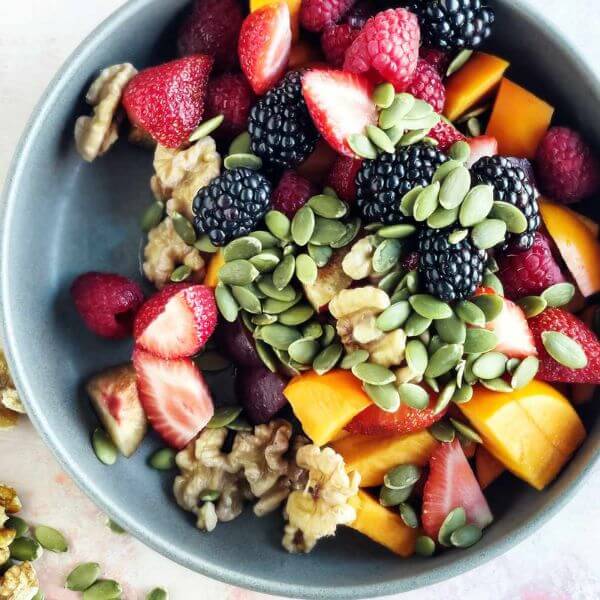
Anti-Inflammatory Superfoods You’ll Love Adding to Your Plate
Talking about foods that your body will thank you for, these are the true heroes of your Anti-Inflammatory Diet. Fishes such as mackerel and salmon , also sardines are full of omega-3 fatty acids which are strong inflammation fighters.
Next, Berries! (especially blueberries), leafy green veggies, broccoli and also bell peppers which are rich in antioxidants and phytonutrients and also colour! These natural compounds actively try to reduce inflammation and boost your immunity in the most delicious and colourful way.
Also, don’t forget your whole grains like your Oats, brown rice and quinoa. Unlike the usual refined carbs like white rice or white bread, these will help you regulate your blood sugar and reduce the inflammatory spikes. You can even sprinkle on some turmeric, garlic, ginger and cinnamon for more flavor and extra healing with a bonus of a divinely smelling kitchen.
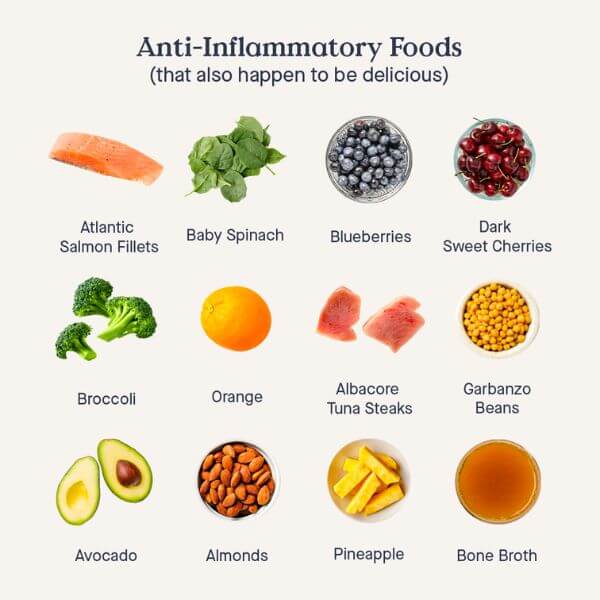
Foods That Trigger Inflammation—Time to Say Goodbye (Mostly)
Now for the not-so-fun part: the causers. These foods may taste heavenly, but they’re truly troublemakers inside your body. On top of the list, we have Processed meats like bacon, sausages and deli meats. They’re loaded full of preservatives and saturated fats that can ACTUALLY lead to inflammation.
Then comes the refined sugar inside all the sodas, candies and pastries and even the “healthy” granola bars. Increase in the amount of sugar also increases the insulin levels. This set offs a chain reaction of inflammation. Your sweet tooth may not like avoiding these, but your joints will.
Coming to the refined carbs now, the white bread, white rice and the pasta. These quickly break down into sugar and can fuel your inflammation just as quick. And also, the deep-fried foods, as crispy and tasty as they might be, if cooked in unhealthy oils that can irritate your system. Instead try roasting or air frying.
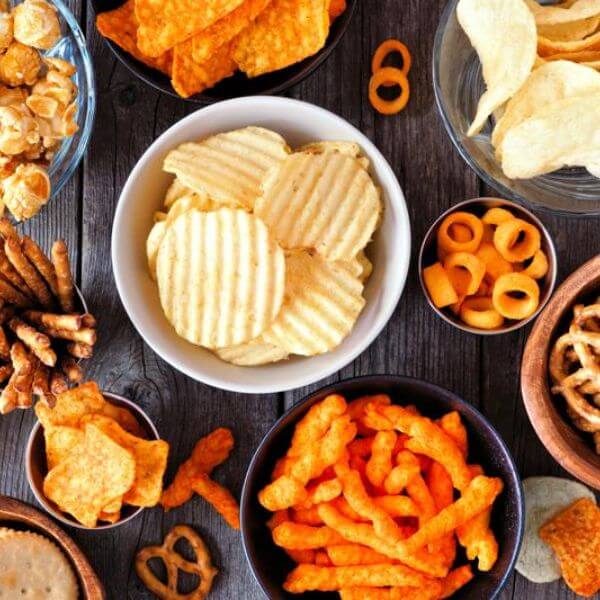
Anti-Inflammatory Meal Ideas to Keep You Inspired
Eating healthy doesn’t always have to mean eating boring. A typical Anti-Inflammatory Day may start off with oatmeal topped with some berries, chia seeds and a swirl of some almond butter. Sprinkling cinnamon can add extra anti-inflammatory punch.
Lunch can be colourful as well as tasty with a salad full of spinach, some grilled salmon, avocado, cherry tomatoes and a lemon-olive oil salad dressing. You’re feeding your body healthily and satisfying your taste buds at the same time. You can also use more spices and switch out the salmon for some chicken. Try some combinations if you’d like some change.
Dinner could be a hearty lentil curry with some turmeric or ginger (Dal) served with some brown rice and maybe some roasted broccoli. If you’re looking for some snacks, go for walnuts, hummus with veggie sticks or some dark chocolate with green tea. Chocolates are also allowed however in a moderate rate.
All in all, these meals are all about testing and combinations. Try many combinations if you’re bored or if you don’t have the time just look up for some.
The Gut-Inflammation Connection: Why Probiotics Matter
Your gut is actually the control center of inflammation. A healthy gut helps regulate your immune and keeps the inflammation in check. That’s why probiotics are a must in any and all Anti-Inflammatory Diet.
Probiotics such as kefir, yogurt, kimchi can be used naturally by fermented foods.
These can help you maintain a balance of your good bacteria in your gut as well as keep your digestive system happy and inflammation low.
Pair these up with some prebiotic foods like some bananas, garlic, onions or some oats that can feed the good bacteria. When your gut is in good shape, the rest of your body also feels the difference. Fewer flares, higher energy level, and a happier tummy wait are some effects.
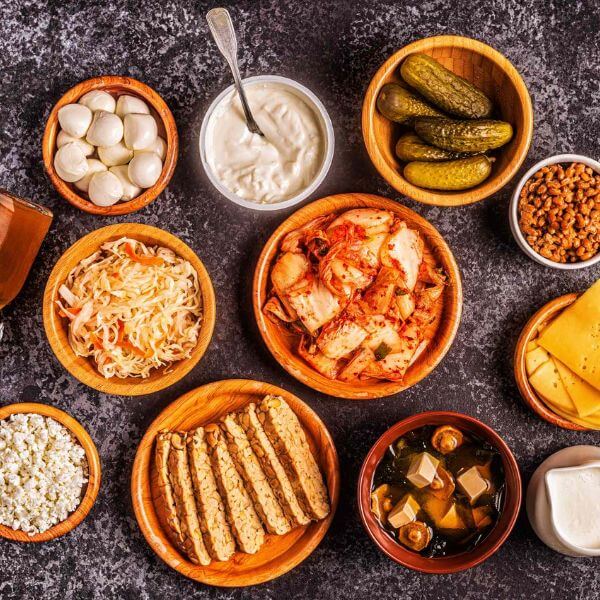
Lifestyle Tips to Maximize the Anti-Inflammatory Diet’s Benefits
To truly fight inflammation, your lifestyle also matters. This means that you should be getting enough sleep. Your Body repairs itself during rest hence about 7-9 hours of sleep really matters.
Regular movement is also important. You don’t have to go and run full on marathons but you can engage in some brisk walking or yoga or even dancing in your kitchen while cooking also counts. Physical activity can also help you boost circulation and help you flus out inflammatory toxins naturally.
And do not underestimate stress. Chronic stress can also lead to a spike in inflammation like your junk food. You can try meditating, journaling, or simply taking a break to just breathe. Combine these habits with your inflammatory diet an you’ve got the wellness formula that can work wonders.
Conclusion
You don’t need any fancy pills or any restrictive cleanses to fix inflammation. All it takes is to show your body some love and care by making the right food choices. The Anti-Inflammatory Diet isn’t just a quick fix or a crash course; it is a lifestyle rooted in balance, colour and some common sense.
Remember you don’t HAVE to be perfect. Even small changes can make a major difference over time. So, give yourself some time, enjoy the journey and celebrate each meal as a step towards a stronger, better you.
UTI Infection vs. Superbugs: Are We Running Out of Cures?

Posted On: July 2025
The Rise of Superbugs: A Crisis in Your Bathroom
Have you ever felt a burning sensation while peeing and rushed to your doctor, got some antibiotics only for nothing to improve. That UTI infection may be fighting back even harder than ever, but now with the help of Superbugs. Invisible to the eye and evolving quickly.
There’s some bacteria like E-Coli which are the main reasons that cause UTIs. They have now become resistant to the common medications and some strains have even turned into an ESBL producing bacteria i.e. they can fight off even the strongest of all antibiotics like they’re simple candy. Don’t forget MSRA as well, a once infamous bacteria which was only seen in hospitals but now can also be found in your home. Your clothes, or even your hands may be unknowingly carrying these bacteria and microbes.
These superbugs don’t even stay put either. A simple UTI can lead to much worse symptoms such as kidney infections, sepsis or more if not correctly treated. And as these bacteria evolve and resist our medicine, pharmacies alike are running out of solutions. That is why we need to understand that resistance to antibiotics isn’t a topic just for scientists – it can affect your bladder, family and even your future.

Your Immune System Is Tired—Here’s Why It Matters
Your body and immune system are fighting infections and diseases all day, every day no matter what you’re doing, from sleeping to working. But sometimes they just can’t keep going and slow down especially when you’re stressed, living on coffee and processed food or sleep deprived. This can lead to a major problem and your tired immune system becomes the playground for UTIs.
If you’re frequently dealing with recurring UTIs then your antibiotics may not be the problem, your immune system is just not able to keep up. Some people who live with autoimmune diseases such as lupus or CFS (chronic fatigue syndrome) are already more vulnerable than people with no autoimmune diseases. Even your own emotional health and stress can play a big role in weakening your body’s inflammation response.
UTIs are often treated with medication but most forget to ever look at the whole picture. Are you getting enough nutrients? Is your body completely hydrated? What about your stress level? These also affect your immune system and play a big role and can weaken your immune and give bad bacteria a chance to survive. Keeping your Immune Healthy is just as important as simple prescriptions.
Pee Problems, Planet Problems: Global Impact of Resistance
Let us take a step back. Your personal UTI infection may feel small, but when millions and millions of people are misusing such antibiotics then it becomes a global issue. The World Health Organization (WHO) has declared antimicrobial resistance or AMR to be one of the top 10 highest public health threats over the world. It may seem small but your bladder does play a crucial role.
When people overdose and use antibiotics they don’t require, or just stop midcourse, they bacteria may start adapting and adjusting. Over time these bacteria start to complete resist the drugs completely. Then, the next person who’s infected will not respond to the usual treatment and that’s how your private problem becomes a global emergency.
Clinics, Pharmacies and even online stores have to step up. Governments around the world are now pushing for better medical/antibiotic policies but true prevention starts with you. You should always finish your prescribed course never self-diagnose and medicate and avoid getting antibiotics over a “just in case” situation. Small choices like these can lead to the betterment of the future and can protect upcoming generations from living in a world where UTIs become untreatable.

5 Everyday Habits That Invite UTI Infection
You don’t HAVE to live in a bacteria bubble to avoid UTIs, but there are some habits that are unhelpful. Skipping post-workout showers, holding in pee or even wiping the wrong way can all create the playground for bacteria to play and thrive in.
Wearing tight, non-breathable underwear, or staying in your wet clothes after exercising can increase warmth and moisture, the true love of bacteria. Even your soap matters. A Fragrant and harsh soap can heavily disturb the environment and balance of bacteria in your private areas, making you more prone to infections.
Drinking too less water can also sabotage you. When you drink less water and get dehydrated, you pee less giving more time for bacteria in your bladder to multiply. Simple habits like drinking water and staying hydrated, choosing comfortable cotton underwear and using gentle and slow hygiene products instead of harsher ones can also make a big difference in keeping infections away.
UTIs in Kids, Elders & Men: Hidden Risk Groups
You might be blinded by thinking that only women are affected by UTIs but you couldn’t be more wrong. Even Men, kids and seniors are all vulnerable to UTIs in ways that can go unnoticed and since these cases are not considered to be the norm or typical, their symptoms often are misdiagnosed or ignored.
In Younger ones like children or babies, UTIs may show up as irritability, vomiting or fever and not the usual burning when you pee. For elders, sudden falls or confusion may or may not be the only symptoms which can lead to delayed treatment. Seniors are often known to use catheters or living in nursing homes and are especially at a higher risk due to prolonged exposure to bacteria.
Men aren’t immune either. Prostate issues can also lead to frequent urination yet your bladder may not be properly emptied which can lead to huge increase in UTI risk. If you’re a caregiver, parent or simply becoming older, just keep a lookout. Knowing the signs and looking for proper treatment earlier can reduce the risk for worse complications and can help keep yourself and people are you safer.
Smart Defense: Building a Future Without Resistance
But What if we outsmarted the bacteria before they evolved? That’s the dream and now it is becoming reality with improving science and technology and everyday habits. Fighting UTIs isn’t all about reacting. It is also about preventing, strengthening and thinking about the bigger picture.
Even Vaccines for UTI causing bacteria are in the works. Offering hope for long-term protection. For now, boosting your immunity naturally through probiotics, vitamin C and herbs aids your internal defense system. You don’t need to go full vegan but small additions can go a long way.
With Tech stepping up, diagnostics tests can now tell what bacteria is causing your infection and what antibiotic may help. This may help doctors prescribe you proper medication and avoid unnecessary medication and aid a speedy recovery.
Conclusion: Your Small Selections Matter Big
UTI infection are not normal and minor. It is much large story that includes global safety, resistance from antibiotic, immune strength. Check for your daily habits as this makes a difference. Your every small and smart choice will help you to protect not the bladder. You are responsible for your activities that is from drinking water to intake of antibiotics.
Frequently Asked Questions (FAQ)
1. What is a UTI infection?
UTI is urinary tract infection which is lead by E-Coli bacteria and it invades the urinary system. This causes frequent and urgency peeing, also cause burns. It also affects your pelvic region, kidneys and bladder in severe cases.
2. Can I treat a UTI infection without antibiotics?
If the infection is mild, it improves condition with some natural habits of keeping hydrated or with intake of cranberry extract. You also need to consult your physician in case of long time or severe infection or else it may lead to kidney issues.
3. Why do I keep getting UTIs repeatedly?
This may take place due to low immune systems, hormonal changes, poor hygiene and antibiotic resistance, lifestyle and gut health.
4. Does men get infected via UTI?
Yes, men can also get UTI infections. Found in older men due to the prostate issues. It is less common in men but still can cause serious issues.
5. Can scented soaps or hygiene products cause UTIs?
You are not supposed to use harsh or fragmented soaps as they disturb the natural process of bacteria protection which increases the growth of bad bacteria it infects the bladder.
6. What can I do to prevent antibiotic resistance?
It is necessary to complete the dosage as guided by your doctor. Avoid the use if meds that are left over.
7. How do I know if my UTI infection has become serious?
You will face fever chills, back pain or nausea with UTI symptoms and this may also infect your kidneys.
8. Can diet and hydration really prevent UTIs?
Hydration is essential to prevent UTI. A proper diet with intake of low sugar, probiotics and antioxidants increase the strength of your immune systems.
9. Do UTIs always cause pain or burning?
In some cases, such as young children or elders it cause fatigue, fever without burns and can create confusion.
10. What are superbugs, and should I be worried?
The bacteria which resist the antibiotics are superbugs. You should be worried if these grown on large numbers than you will not be able to treat infections.
Seed Oils & Inflammation: Facts Doctors Wish You Knew
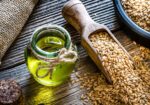
Posted On: July 2025
Seed oils have always been on the hot debates with modern diets and health concerns. It may the doctor’s office or even the social media its always in the discussion and misunderstood. Seed oils have been in the many kitchens as a staple need from snacks to the salad dressings. Due to some important issues these days using the seed oils is a concern. In this post we will try to clear out the confusion and try to express facts about the seed oils and your overall health.
1. The Omega War: Are Omega-6s Really That Evil?
Let’s check here if that is true? Omega 6 is found in many seed oils including the soybean oil and the sunflower oil, and they are not bad. Your body need them to function for brains, skin health and growth. The main problem arrives when you overpower the omega6 to omega 3s in your diet.
There is always a balance between the omega-6 and the omerga3 fatty acids. If omega 6 without the balancing of omega 3 increases, then it leads towards inflammation. The western diets today the modern ones are heavy in the processed food items and seed oils. The required ratio of these factors is approximately 4:1 or May 1:1 for proper health however todays it is found to be the 20: 1 which is harmful.
You need to focus on the balance and there is no need to ban these oils. You can add omega 3rich foods such as flax seeds, some fatty fishes, walnuts into your meals. Do not use ultra processed snacks that are locked with hidden oils. In this way you will be able to keep your heart healthy and reduce the inflammation. There is no need to erase the omega 6 from your diet but to balance properly.
2. Gut Check: How Seed Oils Might Be Fueling Gut Woes
It is your gut that plays a huge role in managing from the mood to your immune system and here the seed oils may not be helping. There is a need to do a more research on this however, some early reports suggest that inflammation may occur due to increase use of processed seed oils. This is because of the linoleic acid that is used which disrupts the gut system if consumed in large quantities.
Once your stomach lining is into trouble this can encourage the intestinal permeability. The particles of the food and some toxins enter the bloodstream due to this. It causes the chronic inflammation. If a person is suffering from Crohn’s disease or IBS use of such oil will worsen the condition. Also, the recurring bloating issue with any person will not support. The effect is seen over a long period of time after use.
Please take audit of your oil if you are using any of these and facing any such gut issues. Prepare your meals in more healthy oils such as olive oil or coconut oil rather than the sunflower or canola oil. Keep eating more fiber. It is necessary to keep your immune system properly and it starts from your gut.
3. Autoimmune Amp or Ally? Surprising Insights
If you are living with disease that is autoimmune which can be rheumatoid arthritis or the lupus that means you are suffering from the condition if inflammation recurrently. It has been reported that omega-6 s in some seeds oil activate the pro-inflammatory markers, and this adds to the worst conditions.
It is also necessary to know that not all types of seed oils affect everyone. The process cycle of the oil matters. In the cold pressed the refined oils are more retained with nutrients and they do not disturb our system. The heavily refined oil which are present in the processed snacks or fast food are almost stripped from nutrients and they contain more additives.
It is always wise to read the labels carefully before your intake any ultra processed oils and if you have autoimmune conditions then you better check before you buy. Select the correct ones rather than discontinuing the use. Select the anti-inflammatory food and drink water too much. You may even monitor on how different use of oils react.
4. Joint Pain & Cooking Oil: A Hidden Connection?
You may have increase in body pain, random aches, stiffness n joints by what your intake daily. Cooking oil is one such option in the intake. Some of the expert believe that using excess of omega-6 from the seed oil also contributes to the joint inflammation.
The production of the prostaglandins also known as signaling molecules are produce from fatty acids. When there is too much of the omega 6 your body creates more pro- inflammatory prostaglandins which increases the joint discomfort. It does not mean that seed oils cause arthritis, but they do play a part.
It is therefore essential to change your oils with the one of anti-inflammatory properties.. It has the oleocanthal, which is a comparable compound to Ibuprofen. You can also add intake of fruits and vegetables with natural antioxidants. All these changes will help you to get better and reduce the everyday pain and inflammatory issues.
5. Pantry Refit: Anti-Inflammatory Alternatives You’ll Love
There us no need to change your food items or the favorite recipe. Cut back your seed oils. There are many options and health friendly alternatives that you can adapt. Changing the oils with inflammatory properties will lead you to overall wellness.
You may change your oil to the extra virgin olive oil. This oil is heart protective and anti-inflammatory. The second option that you may adopt is the GHEE, called clarified butter. It is rich fat-soluble vitamin, and it is tasty alternative option. You can make a use of avocado oil for high heat cooking. It is great and has monounsaturated fats that will support heart and joint health.
When you buy your grocery keep a check on the label and do not buy the blended or refined oils. Use the cold pressed oils or the virgin oils in your kitchen. Make small changes to your cooking habits and your body will not complain.
6. Truth Test: Exposing TikTok’s Top Seed Oil Myths
You find many Instagram and Tik Tok influences claiming to throw the seeds oil, and they also call them toxic. Let’s find the below what is true about this trend.
Are all seed oils are poisonous and toxic?
It is not true; it depends upon the processing of the oil and your use or consumption.
Do Seed Oils Cause Inflammation?
Seed oils do not cause inflammation. It is all about the chromic overconsumption and the ultra-processed foods.
Seed oils cause Tuberculosis?
There is no evidence that they cause tuberculosis. It may weaken your immune system.
You must be smart enough to use seed oils . If you use them in moderation and do not use or lessen the refined oil usage, then you may balance with your fats easily even with omega-3 source.
Final Note:
Always remember that a chronic inflammatory issue may weaken your immune system and this may rise the infection which can include the respiratory conditions also. It is necessary to have a well-balanced diet with whole rich foods and anti-inflammatory fats with proper nutrients.
Keep reading with GenPharmarx.com for more such information.
What Are 10 Healthy Green Leafy Vegetables and Why Important?

Posted On: June 2025
For a healthy and balanced diet, you must include green leafy vegetables in it. Green leafy vegetables are filled with variety of minerals, vitamins and fibres. These vegetables are also low in calories. These vegetables offer a range of health benefits, including lowering the risk of obesity, heart disease, high blood pressure, and cognitive decline.
Kale
Kale is one of the most nutrient rich leafy vegetables in the world as it is rich in minerals, antioxidants and vitamins. The daily value that you can get from Kale with a quantity of 67 grams is approximately 134% for vitamin C. If you consider Vitamin K, then it is approximately 684% and approximately 206% for the vitamin A. Kale contains antioxidants such as beta carotene and lutein which can help in reducing the risk of oxidative stress. To have the maximum benefit you must consume the kale raw as cooking the kale can reduce the nutrient count significantly.
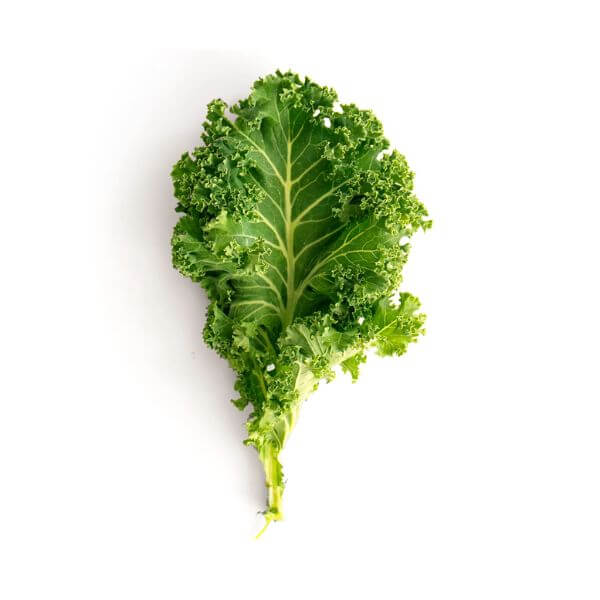
Microgreens
Microgreens are young green leaves obtained from the seeds of various herbs and vegetables. Their average size is 1–3 inches which is about 2.5–7.5 in centimetres. Since many decades, microgreens has been used as a garnish on food but there are many other areas where you can use them. You can grow microgreens at your home easily all around the year. Even though their size is small, they are packed with nutrients and vitamins.

Collard Greens
Collard greens are related to vegies like spring greens and kale. Collard greens are loose leaf greens. These leaves have a slightly bitter taste and a somewhat thick texture. The texture of collard leaves is very similar to cabbage and kale. The name of collard comes from the word “colewort.” Collard greens are rich in calcium, vitamin A, vitamin C and vitamin B9. You get 1045% approximately Vitamin K from the 190 grams collard greens. This vitamin is essential for blood clotting issue.
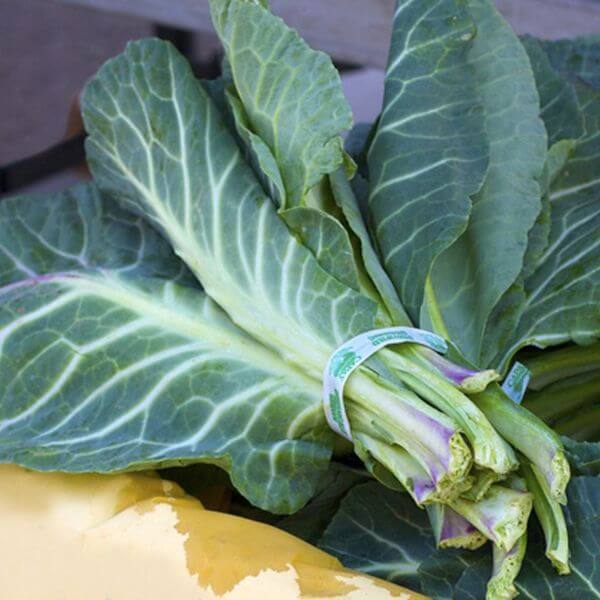
Spinach
Spinach is a versatile vegetable which is used to make variety of dishes, sauces, soups, salads and smoothies. Being one the best and popular green leafy vegetable, it helps to achieve 13% of manganese the daily value from 30 grams of quantity. They also provide approximately 56% of your daily Vitamin A needs and around 181% of Vitamin K. Spinach is also rich in folate which helps in red blood cell production and prevents neural tube defects during pregnancy.

Cabbage
You can find cabbage in three colors which are purple, white and green. Cabbage leaves comes in clusters. Cabbage belongs to the Brassica family to which other vegetables like broccoli, kale and Brussel sprouts. All these vegetables contain glucosinolates which gives them slightly bitter flavor.
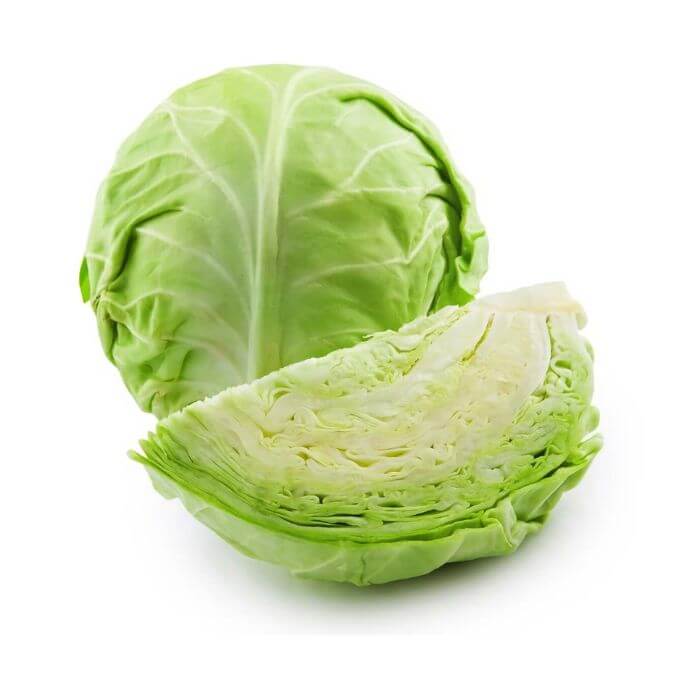
Beet Greens
Beet greens are popular for being healthy green leafy vegetables since middle age. Beet greens are one of the most nutritious vegetables and due to this it is a common ingredient in many dishes. Beet greens are edible and rich in many things such as fibre, calcium, potassium, riboflavin and vitamin K and vitamin A. One cup of cooked beet green which is 144 grams contains 17% of the DV for fibre, 37% of the DV for potassium and 220% of the DV for vitamin A. you can add beet green leaves in soups, salads and side dish.
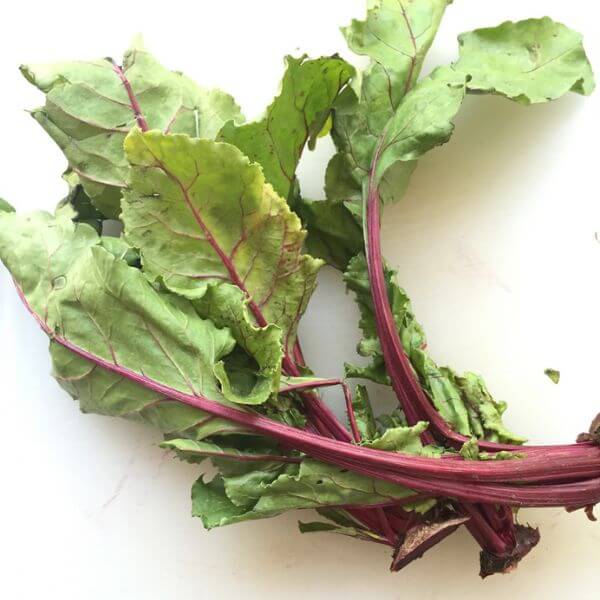
Watercress
Watercress is an water based plant that typically thrives in clean, flowing freshwater streams and ponds. Watercress is from Brassicaceae family. It is similar for Arugula or Mustard Greens. Watercress has been used as herbal medicine for centuries and it has many healing properties. As watercress have bitter and spicy flavors, so you can add them in any bland dish to make it more flavorful.
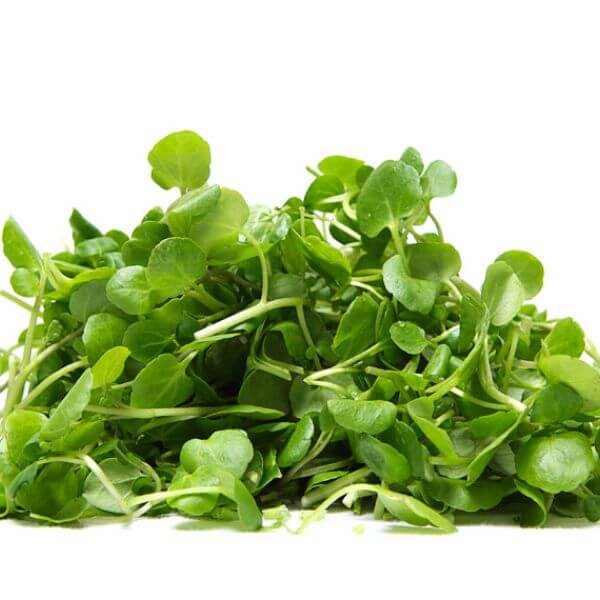
Romaine Lettuce
Romaine lettuce is very common leafy green vegetable which has firm centre rib with dark leaves and sturdy leaves. It has a crunchy taste which is why it is popular in making Caesar salads. One cup of it is almost 47grams which provides you with good amount of vitamin A and vitamin K.
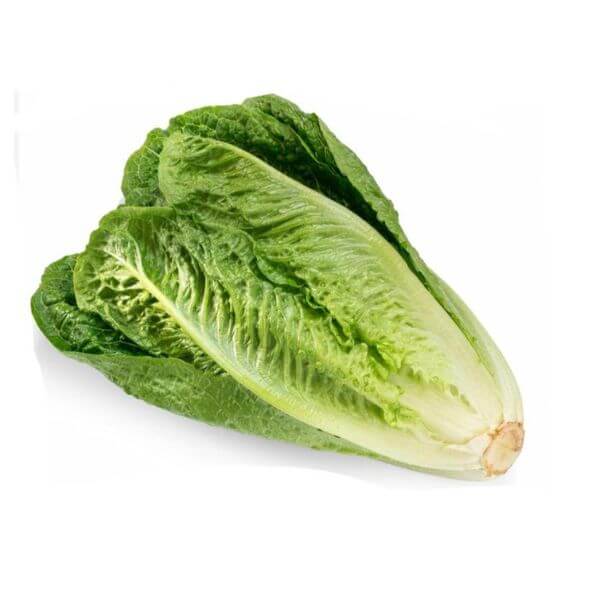
Swiss Chard
Swiss chard contains dark-green leaves with a thick stalk which is found in variety of colors is red, white, yellow or green. It is mostly used in Mediterranean cooking. It belongs to the same family as spinach and beet. Swiss chard tastes earthy, and they are very rich in vitamins and minerals. It is a good source of vitamin A, K and C. make sure to use all the parts of Swiss chard while using them in making food.

Arugula
Arugula is a leafy green vegetable known for its distinct peppery flavors. They are small size leaves and can be easily garnished with salad dishes. It is from the family of Brassicaceae. It has many cosmetically and medical uses too.
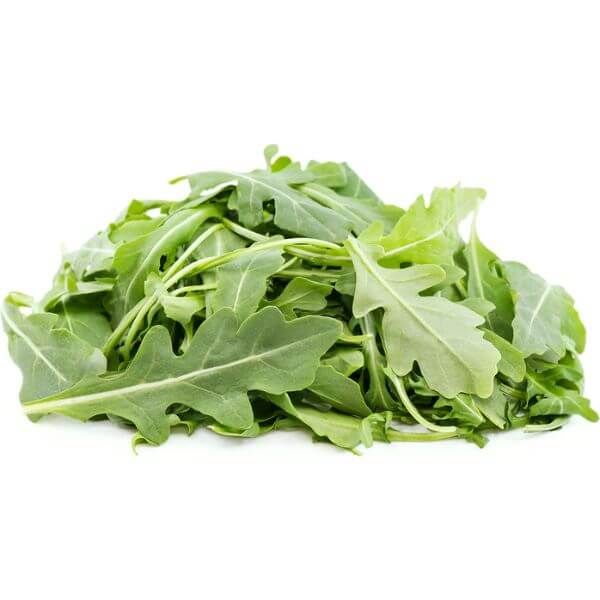
Conclusion
Leafy green vegetables are an important part of our balanced diet. They are filled with plenty of minerals, vitamins and antioxidants important for good health. You can always find leafy greens all around the year and include them in your diet.
Is Your Body Trying to Warn You Through Erectile Dysfunction?

Posted On: June 2025
Section 1: Erectile Dysfunction or Early Warning? When the Bedroom Is a Clue
Erectile Dysfunction has always been a bedroom issue and it’s your body which gives a signal that something big is wrong. Stress and fatigue are the factors however ED gives an early sign of the deeper health related issues. Men mostly ignore then but it’s a red flag for your metabolic disorders or cardiovascular disorders.
ED was first noticed as the sign of the heart disease. When your arteries are clogged and become stiff the smaller blood vessels there reacts first. When you experience such type of difficulty that means its not just the age or your libido but also your heart needs attention. You need to take that seriously as your body is talking to you.
Other conditions such as chronic inflammation, diabetes, high cholesterol significantly contributes to the ED. Erectile Dysfunction comes with low stamina and fatigue when it comes to chronic illness. It is not only about physical readiness but also circulation and hormonal balance, nerve response. Taking care of your general health is related to more satisfying intimate life.
Section 2: From Gut to Groin: Why Your Stomach Matters
You may not know that digestive system and sexual health are related more than real. However, it’s true, they do relate in many terms. A gut with inflammation can disrupt your hormone levels and block the supply of nutrients absorption, give stress to your body. This negatively affects your performance level in bed. Erectile dysfunction is not only about the blood flow but also inflammation and digestion.
When your digestive system is not balances it will trigger a chain reaction. There are inflammatory conditions such as IBS and chronic indigestion that can lower your testosterone and may disturb your energy levels that will ruin your mood. When your gut feels bloated and sluggish your physical ability and desire can quickly take a back seat.
Your digestive health is tied up with your immune system. Inflammation spreads all over the body when your immune system is under attack during any chromic illness and infections. If you want the better performance, better take care of your gut health as it is a core part of the solution to ED.
Section 3: The Pelvic Floor: The Gym No One Talks About
One of the hidden muscles of our body that no body speaks about is the pelvic floor and it plays the major role in sexual health. When your pelvic floor is weak it leads to poor erections and even early ejaculations with urinary leakage. Strengthening of these muscles will do wonders for control and stamina with overall confidence.
You will not need gym machines to train these muscles. It will only need some simple pelvic floor exercises which involves Kegels, squeezing and releasing your pelvic muscles in a day. You can do it discreetly while you are relaxing, working or commuting. Exercising few minutes a day will improve your response and control your muscles.

Erectile dysfunction also stems due to the lack of pelvic muscles control. If you strengthen these muscles the blood flow will increase and improve the nerve sensitivity. It’s the time now if you have not considered this “hidden gym “then it’s the time now to give yourself the best upgrade for your sexual life with no side effects.
Section 4: Heart Health = Hard Health: Blood Flow Basics
If your heart is not pumping as required, then you cannot expect things to be good or work well in the bedroom. Erections depend on the blood flow which is healthy, and you may feel trouble down even if the blood vessels are clogged and narrowed. Erectile dysfunction goes hand in hand with the poor heart health.
Conditions such as atherosclerosis, high cholesterol, blood pressure effects your blood circulation. All these limits the blood circulation reaching your penis and making it difficult to maintain erection. This is the reason why doctors treat ED as a sign to check cardiovascular health, as it can be the body’s early warning system.
Heart friendly habits such as quitting smoking, having a balanced diet and exercise gives better erections. If you take care of your cardiovascular system, then you are likely to see improvements in your performance also. You should think, better blood flow is better than everything including the kind of the health that will keep your spark alive.
Section 5: Medicine Cabinet Check: Are Your Pills the Problem?
Medications which are sitting in your bathroom cabinet is a big mess with your libido. Erectile dysfunction is one of the major side effects of many medications which are used to treat depression, chronic pain and blood pressure.
Some medicines such as antidepressants, beta blockers, some water pills, antihistamines interfere your performance to reach and maintain your erection. It affects the nerve sensitivity, blood circulation and hormones which are the most relatable and important components of the sexual health. Once your performance is dropped while taking a new medication check with your doctor.
Your health is the priority. There is also some alternative option and supportive treatment which minimize the side effects. You need to work with your health care provider and get treatment for both sexual well-being and physical health.
Section 6: Stretch, Sleep, Repeat: The Low-Impact Boosters
It is also the best way sometimes to improve your erectile function with a very simple and low effort lifestyle changes. You always to do not need a medication but your daily habits do make change. Practicing Yoga, stretching and getting a better sleep are some of the underrated issues that are neglected and this all supports the blood circulation and balance the hormones with reducing stress.
Light stretching and Yoga help to improve the body flexibility and blood flow increase to your pelvic regions. All these movements help to stimulate your lower body muscles and core. These activities help better intimacy. They also help stress hormone and lower cortisol, that will interfere your testosterone arousal and production.
Sleep is the one of the other powerful tools. Without proper rest your body will produce very less testosterones and will store more stress. This combination will disturb the sexual function. You need to aim for 7-8 hours of sleep and mix with the activity like the deep breathing exercise. These habits will not only help you solve your issues but also help you feel more alive every day.
Final Thoughts
Erectile dysfunction is not only your bedroom issue but also a good message to your full body. Whether it is your heart or digestive health or hormones or your medications it is necessary to pay attention.
Look and change your lifestyle, talk to your physician and consider what is needed to your body be asking. Your sexual health reflects your overall health and improves one and other way. Act and your body will thank you.
Screen Eyes: Is Your Vision Keeping Up?
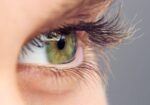
Posted On: June 2025
Eye Care : Is Your Vision Keeping Up?
All of us live in world surrounded by screens. Everywhere you go you will see that everyone is just immersed into their phones or laptops. The only problem with this obsession with screens is that, our eyes silently suffer. From being glued to your laptop at work to your PC at home, your eyes may be taking way more damage than you can realize and this blog is here to help you in eye care.
Digital Burnout: Is Screen Time Melting Your Eyes?
Our eyes are extremely resilient, but breakless exposure to screens can slowly start to reduce this resilience. We blink less and less once we are focused. The eyes get itchy and dry due to this. Also, all screens emit blue light which penetrates deep into our eyes can lead long-term damage if not properly managed.
But these symptoms of eyes strain due to technology are way more common than people think. You might notice some blurry vision or constant headaches, eye redness or even heaviness behind the eyes and cross if off as just basic fatigue or some allergy but most of the time these are red flags, as if your eyes are asking for a break.
Most eye care experts call it a “digital burnout’ although not a term set by ophthalmologists. But it doesn’t mean your eyes are completely unsayable or done for, it just means that they’re not cared for enough and are overworked and if you experience any of these symptoms on a regular basis, you ought to treat your eyes better like you would any other overworked body part. In a kinder way, by taking some rest and making some smart habits.
Blink More, Blink Better: A Lazy Eye Secret
The one unknown fact of human eye is that it blinks 15-20 times per minute normally. But when you’re starting off into a screen, your blink half of that. Your eyes dry out faster because of that which leads to some irritation and blurred vision.
A way to remind yourself to blink more is just to set a silent timer or a sticky note with “Blink!” written on it. It sounds silly, but this small habit can lead to some big-time results. Another way is just to do some blinking exercise. Keep closing your eyes for two seconds then open them. Do this five times every hour everyday while doing your work and it’ll feel like your eyes just went through a mini spa session.
Blinking is what keeps our eyes moist, strain free and lowers our risk of eye infections which can be nasty. If you wear contact lenses or spend more than 5 hours a day on screens, blinking more can help your eyes a lot. Plus, doesn’t everyone want less tired, cleared eyes.
20-20-20 Rule: The Vision Hack That Works
If you don’t already know and use the 20-20-20 rule, it’s time for you to learn and apply this crucial habit. You can do it very easily by looking at anything that is 20 feet away. You need to watch for 20 secs every 20 mins.
When we stare into screens all day, our eye muscles constantly focus on the same distance and that overuse can lead to muscle fatigue. This rule helps you to focus and readjust your eyes elsewhere and relaxes, refreshes your vision.
Taking care of your eye does not always mean that you need to do some expensive treatments always.
Sometimes it’s simple small habits like these that can cause great changes for the better. Set some reminders on your phone or install some app which gently reminds you every 20 minutes. You’ll notice how our eyes feel fresher and lighter by the end of the day.
Glasses, Filters & Apps: Fighting Back Digitally
You don’t always to let go of screens or ditch technology in the case of protection of your eyes, you just need the right tools. Some blue light filtering glasses are one of the more popular solutions that people use when they spend hours in front of screens. What these glasses do that is they just block the blue light your screens emit which can reduce strain and improve sleep quality.
Many devices nowadays also come with some built in eye care features like Night mode or Blue light filters which adjust your screen’s brightness and warmth to make it easier for your eyes. If you haven’t already, you ought to turn them on, they’re really great for your eyes.
You can also resort to using some apps that can help you manage your screen time, remind you to blink or even guide you through some vision exercises. Combine these with some smart habits and your eyes will be thanking you.
Is It Screen Time or Something More Serious?
It’s easy to mark off blurry vision or headaches as just some simple screen fatigue, but often times these smaller symptoms can lead to or be signs of some very serious eye conditions. Taking care of your eyes means knowing the difference between just overuse or actual illnesses. Ignoring these earlier signs may delay treatment for some very bad illnesses like Glaucoma, Astigmatism or even Retinal Issues.
If your vision problems still continue after eye care, rest or eye drops. It’s finally time to visit an ophthalmologist (doctors that specialise in eye care). Continuing or Persistent dryness, sudden flashes, worse vision every day or halos around lights are all some very common red flags. Don’t wait until these things get worse, detecting these early can be difference between fixed eyes and long-term issues.
Being cautious and proactive about your eyes and their health can save you from some very bad, long-term issues. Regularly taking eye exams, wearing some blue light glasses even if you don’t have prescribed specs are essential. Eye care isn’t just for people who already have problems. It’s for everyone especially in this digital age.
Sleep, Screens & Sight: How Night Habits Steal Clarity
Using screens late at night can mess up more than just your sleep, your eyes silently suffer. Whenever you’re in bed just scrolling through Instagram or watching some YouTube videos, your pupils dilate to compensate for the darkness late at night and unknowingly allow more and more blue light into your eyes. That intense exposure to blue light before bed can lead to disruption in your melatonin production.
Melatonin is a hormone crucial for your sleep and disruption of it’s production leads to lack of it making you stay awake for longer. Staying awake late at night and lack of sleep can lead some burning, tired and red eyes the next morning. Over time, these patterns affect your eye health and make them more sensitive and prone to irritation. Night scrolling may feel mentally relaxing but it robs you and your eyes of the rest needed.
To improve you sleep and eye health, set a curfew at least about an hour or two before you go to sleep. You can ask your roommates to do so, or set a reminder on your phone or just lock it away in general. Use warm lighting in your room and sway that screen for an interesting book. If you really HAVE to use devices wear some blue light blocking glasses and switch to night mode. Your eyes really need a lot of rest same as your brain.
Conclusion: Give Your Eyes the Care They Deserve
Our eyes are one of the most valuable natural tools that we use in our daily life and yet they’re one of the most neglected. From just blinking more to the 20-20-20 rule, there’s many small but extremely effective ways to care for your eyes. Using filters, taking breaks and adjusting your sleeping habits can lead to big benefits.
In the digital world of today, proper eye care isn’t just a luxury for some, it is a necessity for everyone. You don’t have to throw away all your screens to be visually healthy, but do stay smart on staying healthy. Go for regular eye checkups, listen to your body’s signals and make some healthy habits.
How Can You Improve Gut Health for a Happier Belly?
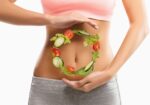
Posted On: June 2025
Gut Health Glow-Up: Secrets for a Happier Belly
You know that moment when you’ve just had the best meal of your life and then suddenly you feel slow, sluggish or bloated? That’s your gut trying to say somethings wrong and to understand that, this blog will guide you to not only help you feel better but also aid you in getting better digestion, balanced energy and even brighter skin. From fermented foods to poop charts and stress hacks, we’re serving up gut health with a glow-up twist.
Your Gut, Your Glow: The Skin-Digestion Link
After having tried all face washes and creams do you still wake up with uneven, dull skin or breakouts? Then the problem isn’t your face, it is your gut. When your digestive system is unbalanced, Bad bacteria and toxins can get into your bloodstream and your skin starts to reflect that as it is your largest detoxing organ.
A healthier gut microbiome helps to regulate this chaos, absorbs nutrients and flushes out what your body does not need. But when your gut itself is affected by bad bacteria, your skin may pay the price and worsen. Many studies have shown that a gut imbalance may give rise to many conditions such as eczema, rosacea, acne and more.
So, how can we fix this? Well, you can start by fixing and improving your diet. Reduce your intake of processed sugars, alcohol and fried food. Start to introduce more leafy veggies, prebiotic-fibres and probiotic-rich foods into your diet. Drink water instead of the daily coke and slow down on antibiotics and get enough sleep. How healthy your gut is can directly impact your skin health.
Antibiotics & Aftermath: Heal Your Gut the Right Way
Antibiotics may be life saving and can seem helpful, but they’re like a tsunami. They wash away the bad bacteria but they take the good and beneficial bacteria that help in digestion and keep your immune system strong with them. So, after your course is over, the only thing you have to do is to make sure you rebuild the good gut bacteria.
You can start with foods rich in probiotics like yogurt, miso soup or even aged cheeses. Which are great sources of good bacteria. Don’t forget your prebiotic-fibres too which come from bananas, garlic and onions that feed your good microbes. These are the foundational bricks of gut health recovery.
Try to avoid all processed junk food while your gut heals and give it more nutritional food. Also avoid caffeinated drinks and alcohol. Consider using probiotic supplements but take advice from a doctor first and most importantly, give yourself and your gut time. Rebuilding your gut health after antibiotics isn’t an instantaneous process it takes time. With the right foods and habits, you’ll definitely notice a difference in your digestion and energy.
Fermented Friends: Why Gut Bugs Love Kimchi
Your gut loves fermented food. Why? Because fermented foods are full of live bacteria that improve and make your microbiome stronger, boosting immunity. Think of dishes like kimchi, kefir, kombucha or sauerkraut as presents to your gut health. These foods balance good and friendly bacteria helping overall absorption of nutrients.
When your gut is balanced with and full of good bacteria, everything flows smoothly. Digestion gets better, bloating decreases and your immune system gets stronger. Fermented foods also make enzymes that can help break down nutrients, making it easier for your body to absorb good nutrients.
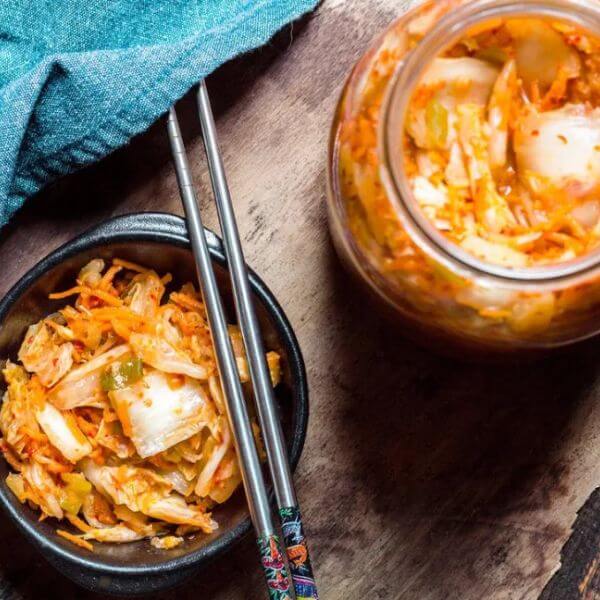
There is no need to change your diet completely. You can start slow and small like drinking a few tablespoons of kefir every morning or adding about a spoonful of sauerkraut into your salads or drinking kombucha instead of sodas. More diversity in your gut can lead to improved working of it. Your body, your mood and your skin will be soon to follow that improvement.
Constipation Chronicles: How to Get Things Moving
Everyone is known to have been blocked up every now and then, but when it becomes regular, its time to revise your gut health. Constipation isn’t just discomfort; it’s your body trying to tell you somethings wrong. Hydration, Fibre and routine play key roles in keeping your digestion in a smooth flow.
You can start with foods full of fibres like lentils or chia seeds, drink a lot of water (about 2 to 3 litres or 8 to 10 glasses) to make sure everything is soft and moving. Keeping yourself hydrated is extremely vital for better digestion.
Also don’t underestimate exercise. A small walk after your meals and can stimulate and improve digestion a lot. Also, improve your bathroom posture. Squatting aligns your body for better flow. Combine this with your routine and you’ll notice your gut improving and everything flowing smoothly.
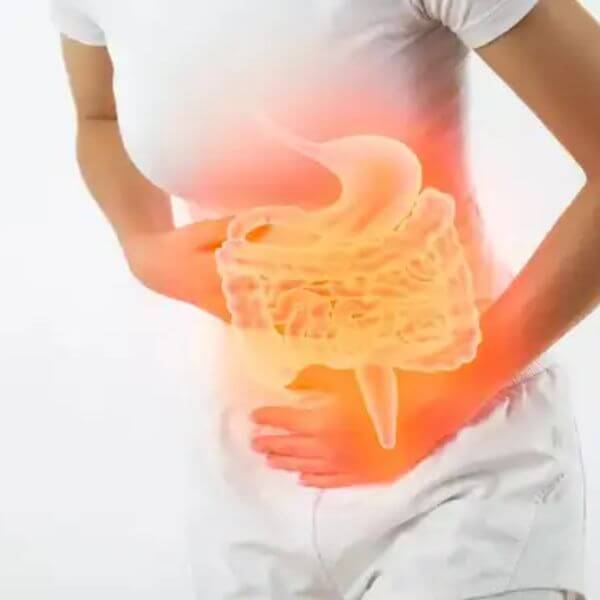
Gut Testing 101: Should You Test Your Microbiome?
Want to know what is really happening in your gut? Microbiome and stool tests can let you know so. What these tests do that is they, analyse your microbiome i.e. all your gut bacteria fungi and even your digestive efficiency and give you information on what you may be lacking or may be growing too much.
While you don’t really have to test your gut to eat healthily, if you’ve known to have chronic issues like fatigue, food sensitivity or bloating it might be worth to check it once a while. Companies often offer test at-home guts where you just have to mail in your sample and can get a detailed report on your gut’s microbiome.
With these reports and results you can improve your diet and supplements better. Some people need more diversity in fermented foods while others need more fibre in their system. Hence these tests make it way easier to know what you need to do and how to do it. Testing is especially useful to people who have autoimmune diseases, IBS or are going through post-antibiotic recovery.
Conclusion: Gut Health is the New Self-Care
A better and happier gut isn’t just about digestion, it can affect your overall mood, sleep, energy, skin and by embracing simple, better habits, better food habits and reducing stress, you will be completely able to improve how you feel from the inside-out. Remember your gut is the center of digestion and does a lot for you, show it some care and it will do the same for you.
Can Anxiety Help You Lose Weight?
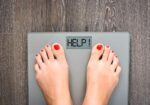
Posted On: June 2025
Can Anxiety Help You Lose Weight?
Weight loss usually recalls images of hitting the gym, following a strict diet, and relying on strong willpower to see results. Do you know if there is something else related to your weight loss? What if your brain chemistry plays any role in this? Anxiety is one of the key factors that can affect mental health—and it can also have a noticeable impact on your body weight. The link between anxiety and losing weight is more complex as compared to change in appetite or energy spikes. In this article we will explore how mental health, stress and weight loss are linked and what are the risks behind.
1. Stress and Appetite: Why You’re Eating Less
While you experience a stressful situation, you may have noticed that, you eat too much or too little. This happens because of Anxiety which plays a large role in controlling your hunger. When your brain understands the threats , the fight or flight system of your body is activated. This in turn causes your body to release stress hormones such as Adrenaline and Cortisol which in turn reduce your hunger.
Adrenaline is one such hormone which stops your digestion temporarily because your body thinks that it is in danger and needs to get away immediately and so you feel nauseous, lose your appetite, or just forget to eat. While this loss of hunger may lead to you skipping meals and some minor weight loss, it comes at the grave cost of your mental clarity, nutrition and energy.
Over time, this anxiety can build up and make this pattern persistent. Long-term lack of appetite can cause nutrient deficiencies and can cause negative changes in your metabolism. You may lose weight due to stress however you need to check other healthier ways to manage emotions and diet.

2. Fight or Flight… or Fit?
Your fight or flight response not only affects your appetite but it also affects your metabolism. It gives your metabolism a short boost, when anxiety appears in your body, it thinks that you need to run or fight so it starts to burn me calories for energy meaning you lose calories during high stress especially if you move around restlessly.
That sounds like a decent aspect for losing weight, right? Not Really. While your body is working more and harder, it is doing so inefficiently. This energy burn due to stress is often followed by troubling effects such as breakdown of muscle, fatigue and can even cause increased fat storage due to elevated cortisol levels over time.
In addition, metabolic boosts due to anxiety are temporary. Once the stress hormones are levelled out, your metabolism resets to its original speed or slows down. This variable effect can also make it difficult to maintain your energy levels consistently or keep a healthy weight. Instead, a balanced approach to losing weight is always better than using Anxiety as supplement.
3. Anxiety-Driven Activity: Fidgeting, Pacing & More
If you’ve noticed yourself commonly nail biting, foot tapping or pacing. But you’re not alone in these. These are repetitive actions referred to as “non-exercise activity thermogenesis” or NEAT for short and can contribute towards some calorie burning. People experiencing higher levels of anxiety are known to engage in these behaviours even unconsciously.
NEAT activities include all those minor physical activities that you do outside exercise. Standing up, sitting down, fidgeting, etc all burn energy. While they are a good replacement for gym workouts, they do make a difference if done consistently throughout the day.
However, there’s a catch. These constant movements due to anxiety can also lead to many unwanted prizes such as Sleep Issues, Joint Pain and even Exhaustion. Hence it is important to balance your restlessness with breaks and calm activities. If Anxiety makes you get up and do more, move more then that’s great but just make sure to get some rest and get enough nutrition for your body so as to not break down.
4. Gut Feeling: The Role of the Microbiome in Mood and Weight Loss
Your brain and your gut are actually very deeply connected. It isn’t just a place where digestion takes place. Anxiety can influence your gut health greatly When you’re anxious, can become extremely unbalanced and can affect everything from your mood to your weight loss progress.
Stress hormones released in your system while you’re anxious can greatly change the delicate balance of your gut bacteria. This imbalance can in turn lead to poor nutrient absorption, bloating and some changes in fat storage. Researchers have even found that chronic anxiety and stress can change your gut microbiome in many ways that can make losing weight harder instead of easier.
But here’s the good part, improvement in your gut health can aid both your anxiety and weight loss efforts. Eating high fibre, fermented foods and reducing your sugar intake can all help have a healthier gut. While Anxiety may throw your digestion off the rails, you can also reset it back and aid your weight loss in the process.

5. Emotional Eating vs. Emotional Fasting
Anxiety can either make you eat more or completely negate eating. Emotional eating takes place when your continually eat for to comfort yourself of stress, sadness or boredom. On the other hand, Emotional fasting is when you do not eat because you’re way too anxious. Both of them are quite common reactions and can mess up your weight loss progress.
Some people use foods like sweets, carbs and chips as comfort foods to manage emotional discomfort but these foods can often lead to weight gain instead of loss. Emotional Eaters may find it difficult to stop once they start, creating this annoying, frustrating cycle of overeating and guilt.
Meanwhile on the other side of the spectrum, emotional faster may feel like relief initially. But the repeated skipping of meals can cause your body’s metabolism to slow down and hold onto your fat storages. Meaning that even if you’re not eating or eating less, you might be losing weight in a quite unhealthy way. Finding a balance by eating mindfully helps to break this cycle and support your physical and mental health.
6. Mindfulness Over Mayhem: Healthier Coping Strategies
If you still rely on your anxiety to lose weight, it’s about time you try a new and gentler approach. Being Mindful can really help you. It simply teaches you to pay attention to your emotions and thoughts without judging them and can help your respond to those with a calmer approach than being impulsive.
You can start slowly and small. Before you start eating, stop and ask yourself if you’re really eating because your hungry or just because you’re stressed. Try to take deep breathes in and out, slowly and steadily to calm yourself when feeling overwhelmed. This deep breathing helps you calm your nervous system down and help you emotional fasting or eating.
Learning mindfulness and introducing it into your daily life can also lead to improved sleep, mood and digestion which are all great contributors to weight loss. Keep in mind that losing your weight with the help of anxiety isn’t a goal. Feeling good overall in your body and in your mind is the true goal. When you start to take care of your own mental health, your physical health will soon follow.
Conclusion: Is It Really Worth It?
While anxiety may lead to some minor weight changes, it is not really a safe nor an effective way to manage your own health. Your stress and weight may be connected but this connection should serve as an indicator to take care of your own mind and body and not neglect them. Losing weight intentionally through proper strategies is always substantially better than losing weight accidently through stress and anxiety and when you focus on healing from the inside and out, all of you benefits greatly. So instead of going for Anxiety for a better waistline try to go the happier, healthier way.



